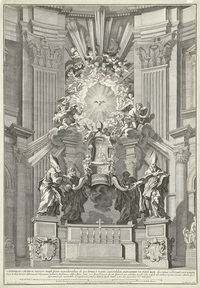The Chair of Saint Peter the Apostle
Feast day February 22

When the pope cautions world leaders, pleads for peace, or condemns social injustice, people listen and respond. What makes the world listen to this man? The answer lies in Scripture and in Tradition. Peter is named first among the apostles of Jesus; he was often their spokesman and leader; he was the first to preach after Pentecost; and he was the leader in defending Christ and his message. Peter was at the Transfiguration and in the garden.

He proclaimed to Jesus, “You are the Christ,” and Christ singled him out:
“[S]o I say to you, you are Peter, and upon this rock I will build my church, and the gates of the netherworld shall not prevail against it. I will give you the keys to the kingdom of heaven. Whatever you bind on earth shall be bound in heaven; and whatever you loose on earth shall be loosed in heaven.” (Matthew 16:18–19)
Jesus prayed for Peter that he might strengthen his brothers. (Luke 22:32) And Jesus gave Peter a threefold commission to “[f]eed my sheep.” (John 21:15–17)
From the beginning, the specialness, or primacy, of Peter has been recognized. On the feast of the Chair of Peter, we celebrate our unity as a Church. We celebrate the love, presence, and protection of Christ for us, the Church. The title Chair of Peter refers to the chair from which a bishop presided, a symbol of his authority. When the title refers to Saint Peter, it recalls the supreme teaching power of Peter and his successors. It is from the chair, from the pastoral power given him, that the pope shepherds Christ’s flock.
Suggestions
-
Encourage the students to bring in articles on the pope and read biographies of recent popes.
-
Have the students discuss the leadership qualities of Peter and the qualities he had to overcome to give better witness to Christ. Invite the students to act out a scene from Peter’s life.
-
Direct the students to quietly read parts of First Peter and Second Peter in the New Testament.
Excerpted from Christ Our Life, by Sisters of Notre Dame of Chardon, Ohio
Image credit: Cathedra Petra within St Peters, Rome by Gianlorenzo Bernini, 1692. Public Domain via Wikimedia.

